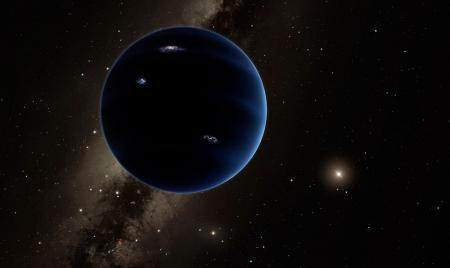Sun 'stole' Planet 9 from another solar system billions of years ago
Planet 9 – if it exists – was torn from its own solar system 4.5 billion years ago and "stolen" by our Sun, astronomers have said. By running computer simulations, scientists say the most likely scenario for the hypothetical planet ending up at the edge of our solar system is it being hijacked by the Sun after a close encounter with another star.
Interest in Planet 9 has reignited in recent months following the detection of several objects at the edge of the solar system with highly unusual orbits. A team from the California Institute of Technology (Caltech) said the orbits of trans-Neptunian objects (TNOs) could be explained by the presence of a massive planet dominating the gravity of that region of space.
While there has been no direct evidence for its existence, scientists have been left to ponder questions regarding Planet 9's properties – and its origin.
Scientists from Lund University in Sweden were investigating the possibility that Planet 9 was "captured" by the Sun from one of the other stars in its birth cluster. Stars are born in groups and, when they are young, they regularly pass by each other. So if a planet is between two stars one could "win" by attracting it into its orbit because it has a stronger gravitational pull on the world.

In a study published in the Monthly Notices of the Royal Astronomical Society Letters, the team said that to have been hijacked in this way, Planet 9 would have had to be far enough away from its own star, while also being far enough away from our Sun so as not to disturb the Kuiper belt. Computer simulations showed the Sun capturing Planet 9 in this way was a plausible scenario.
"Planet 9 may very well have been 'shoved' by other planets, and when it ended up in an orbit that was too wide around its own star, our Sun may have taken the opportunity to steal and capture Planet 9 from its original star. When the Sun later departed from the stellar cluster in which it was born, Planet 9 was stuck in an orbit around the Sun," said study author Alexander Mustill.
The team said that while the existence of Planet 9 remains unproven, "capture appears to predict a large population of TNOs whose orbits are aligned with the captured planet".
Should their simulation turn out to be correct, the researchers say Planet 9 would be the first exoplanet to be found inside our solar system. "It is almost ironic that while astronomers often find exoplanets hundreds of light years away in other solar systems, there's probably one hiding in our own backyard," Mustill added.
© Copyright IBTimes 2025. All rights reserved.






















